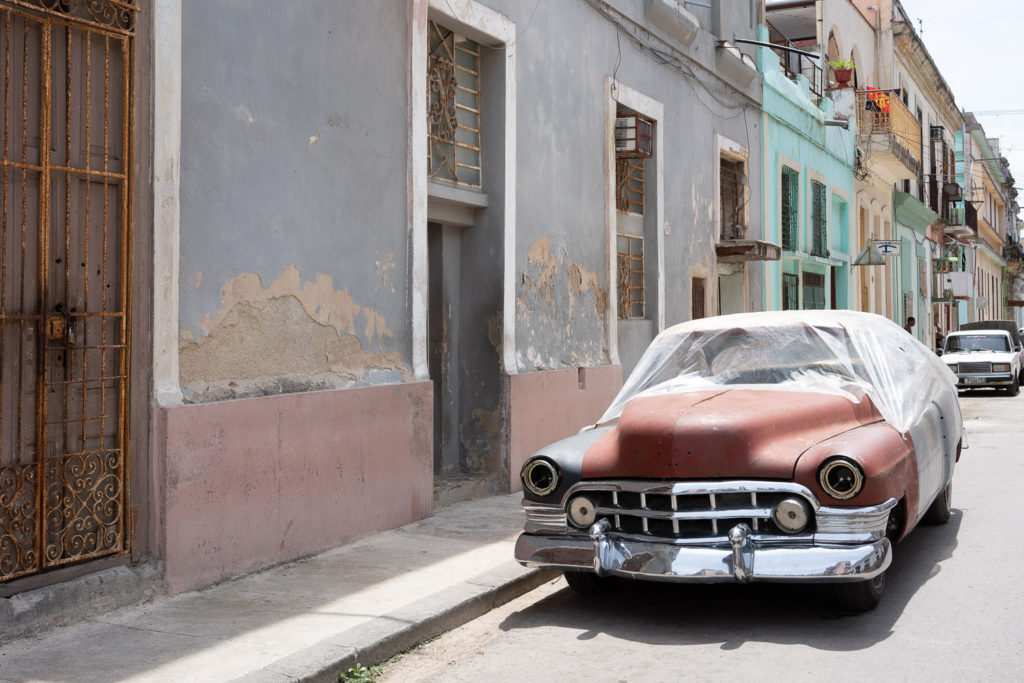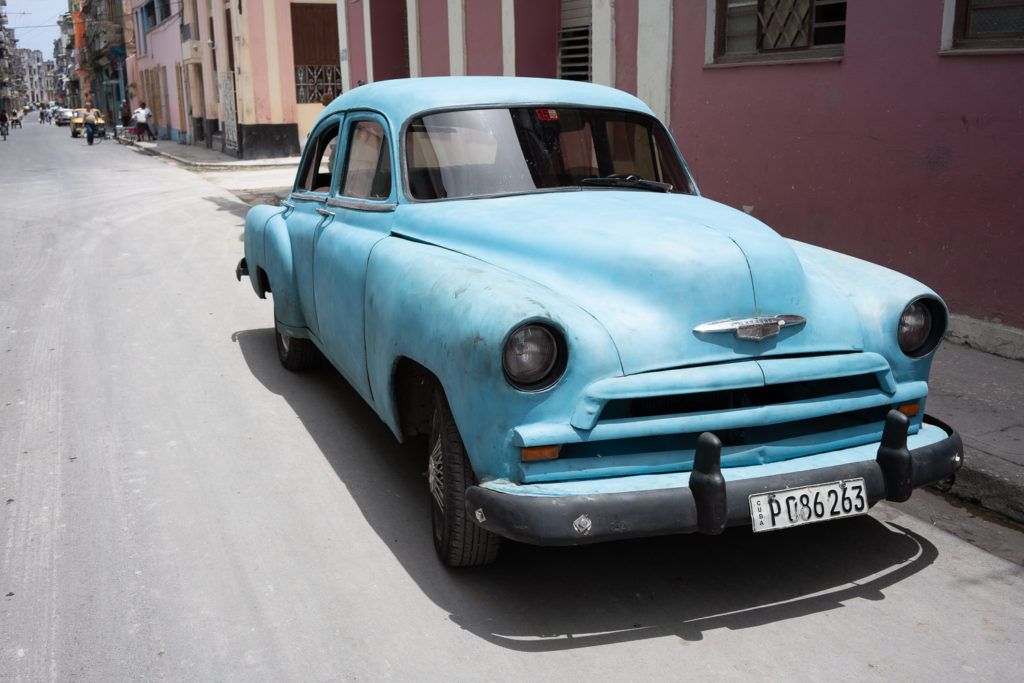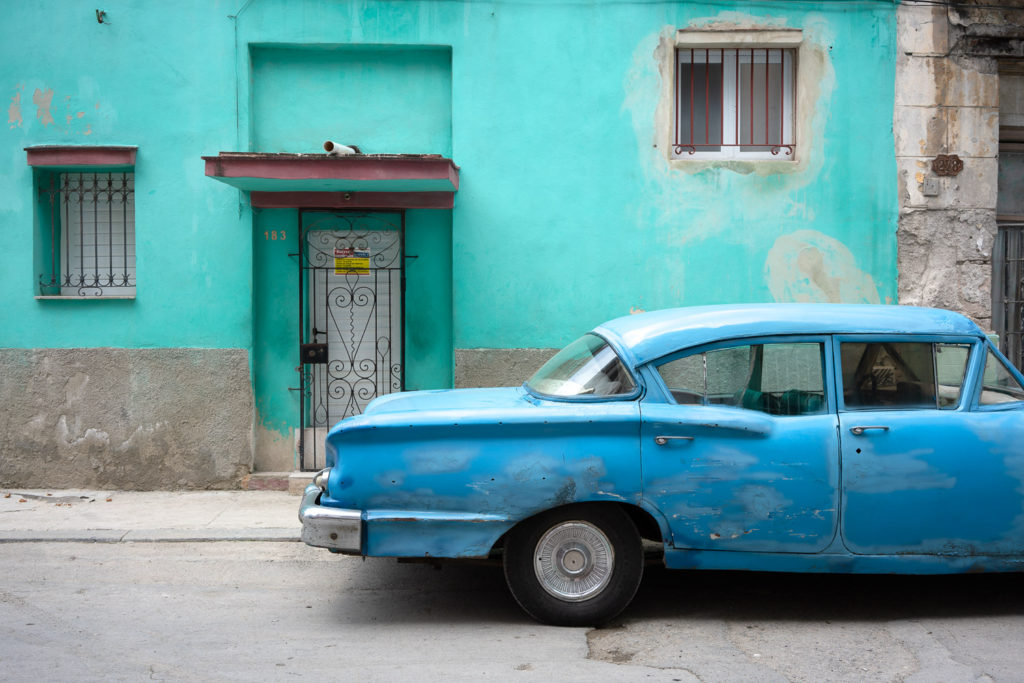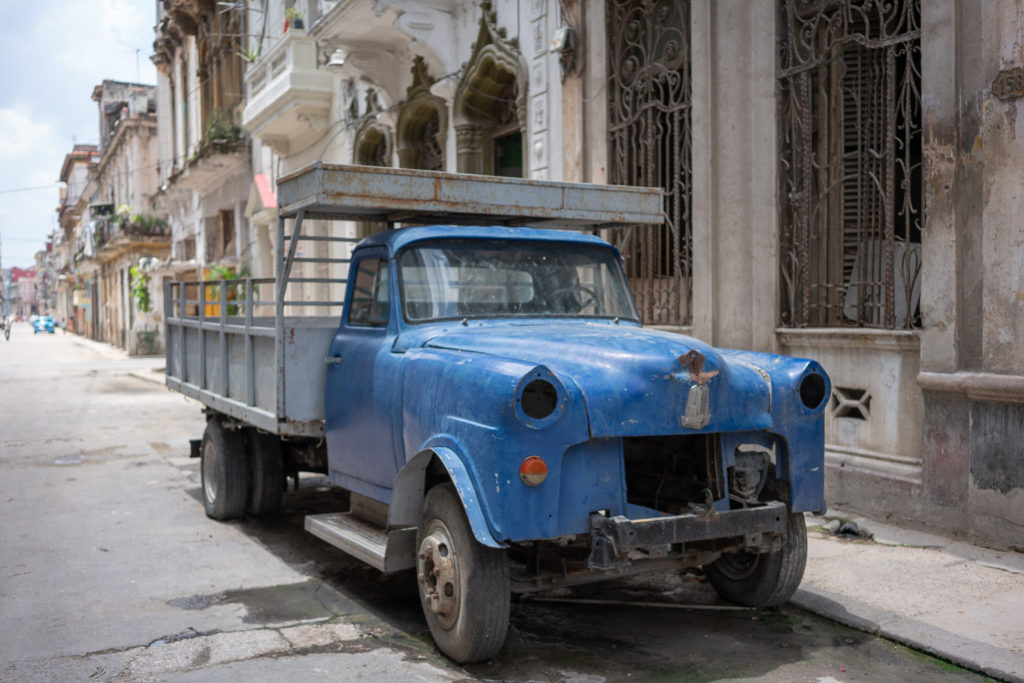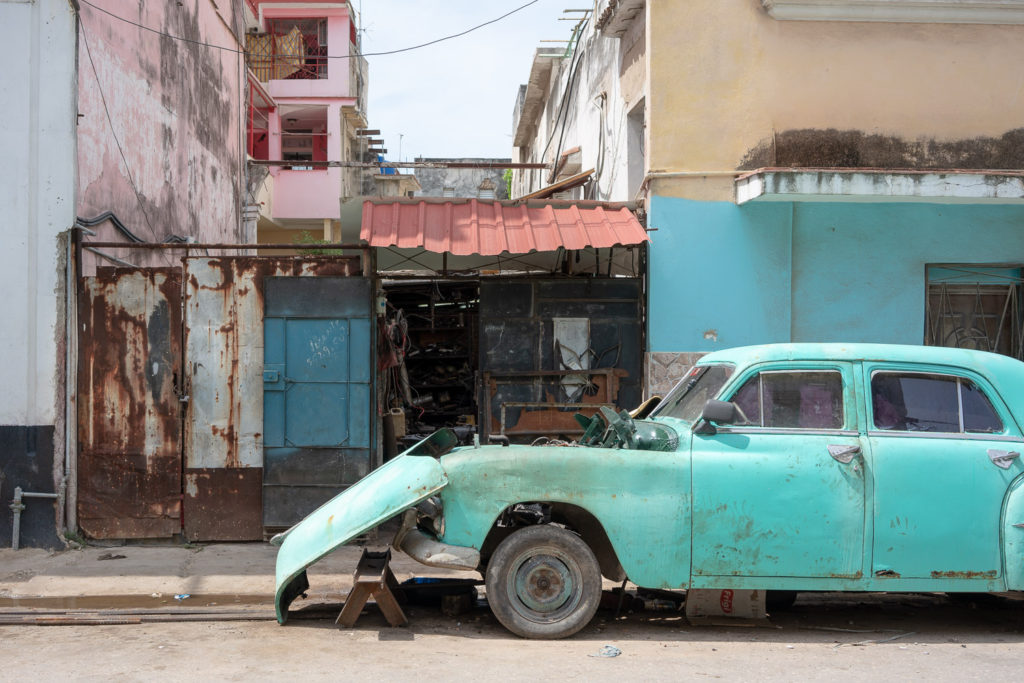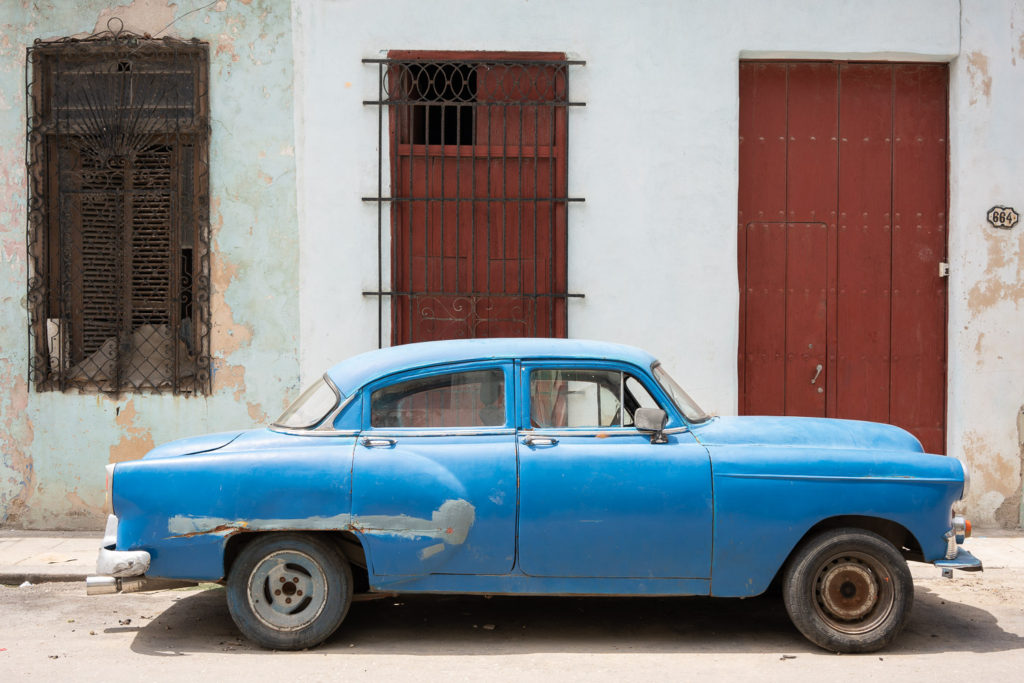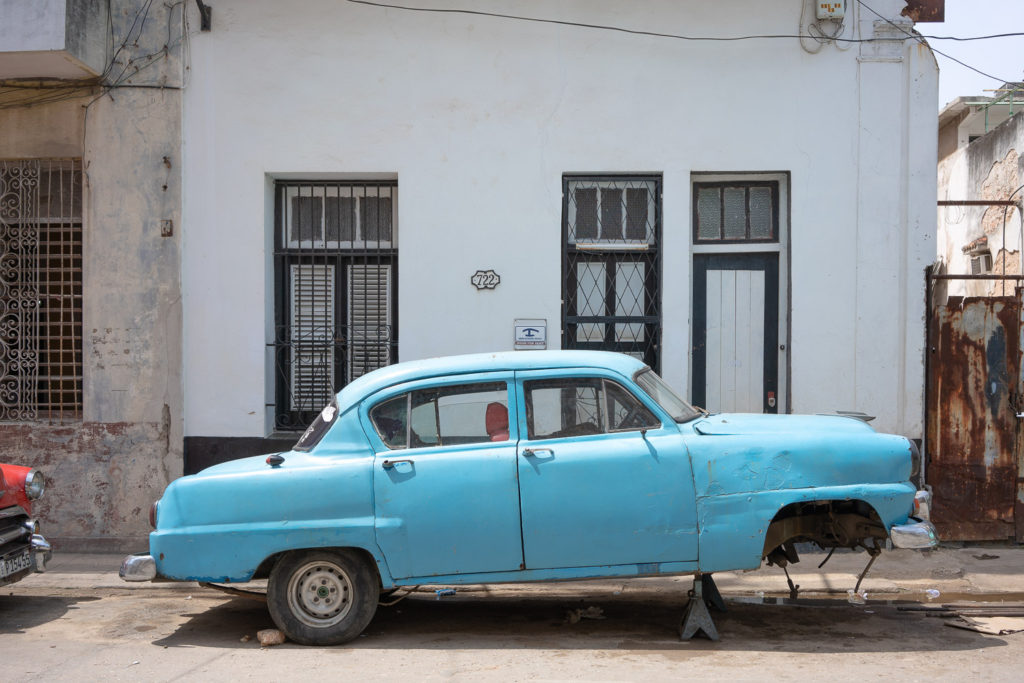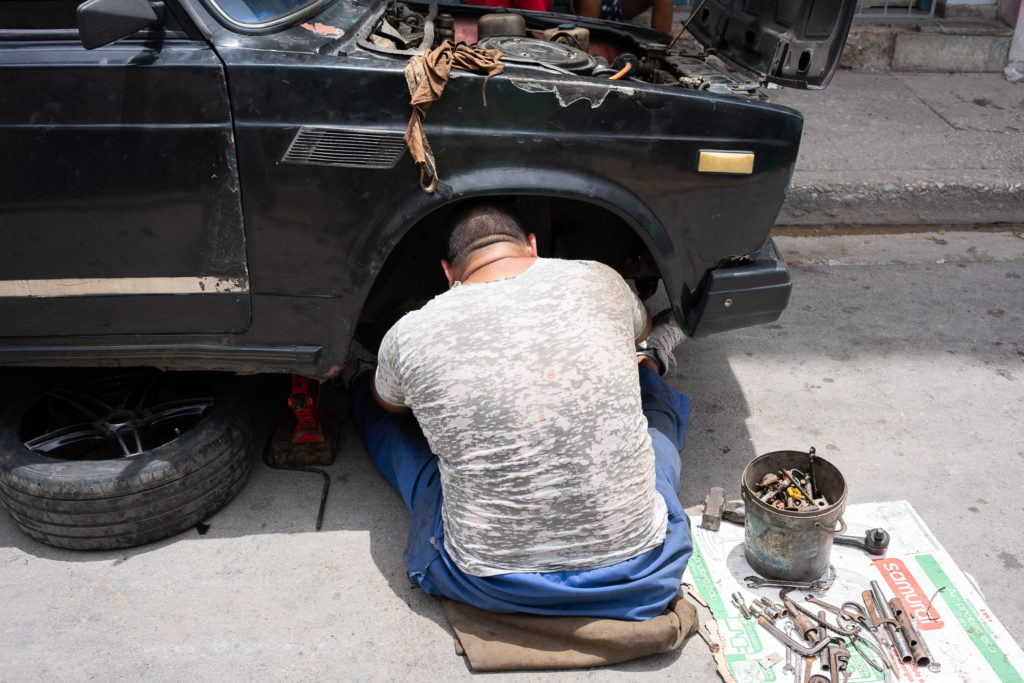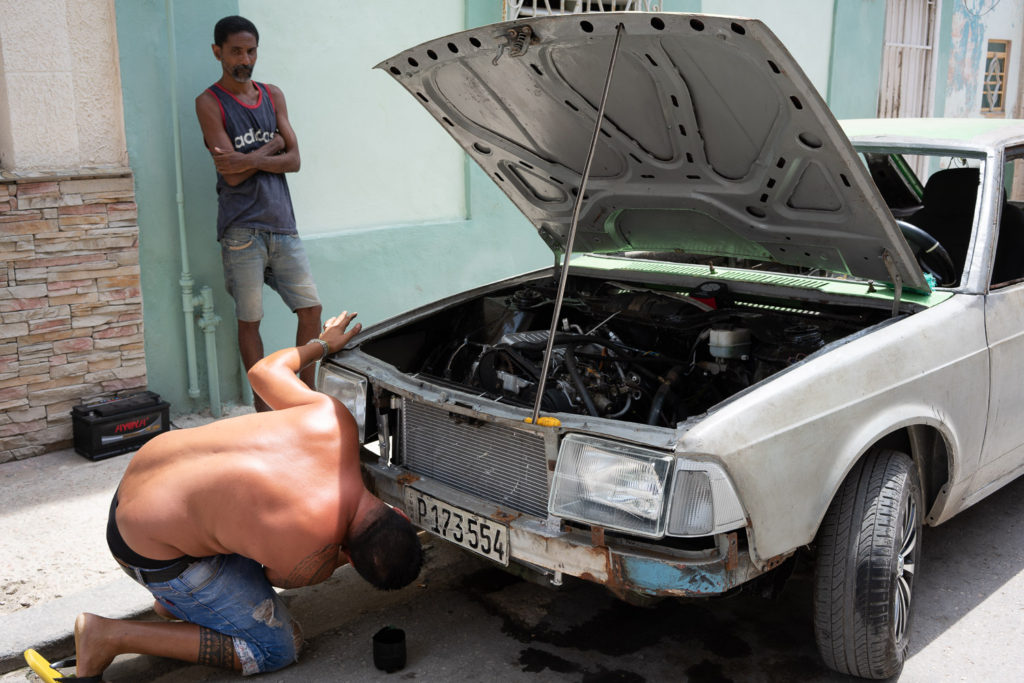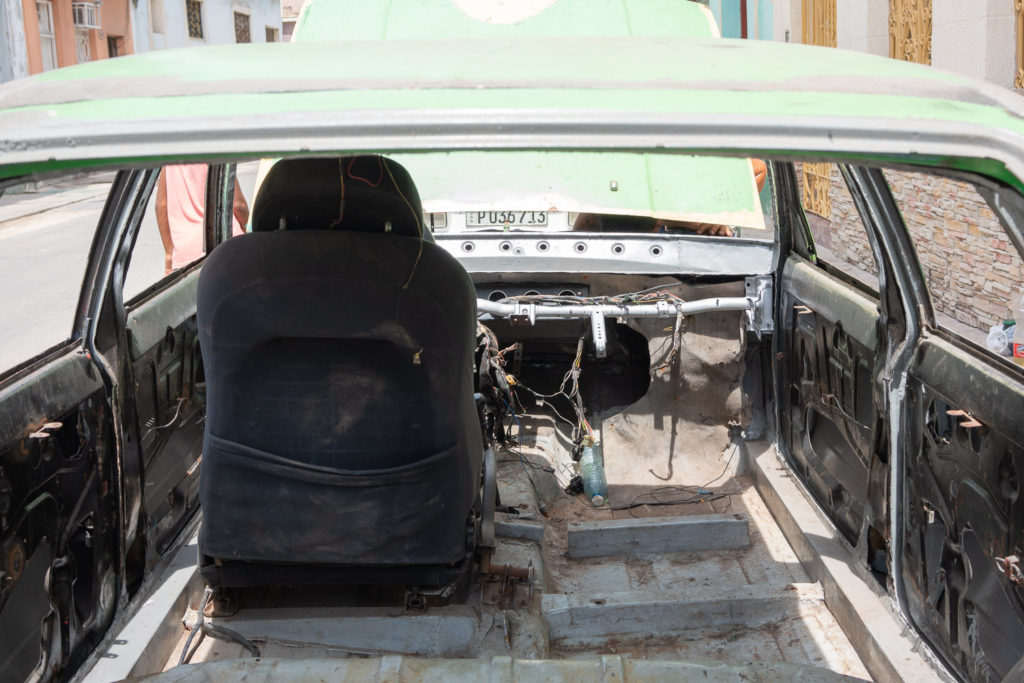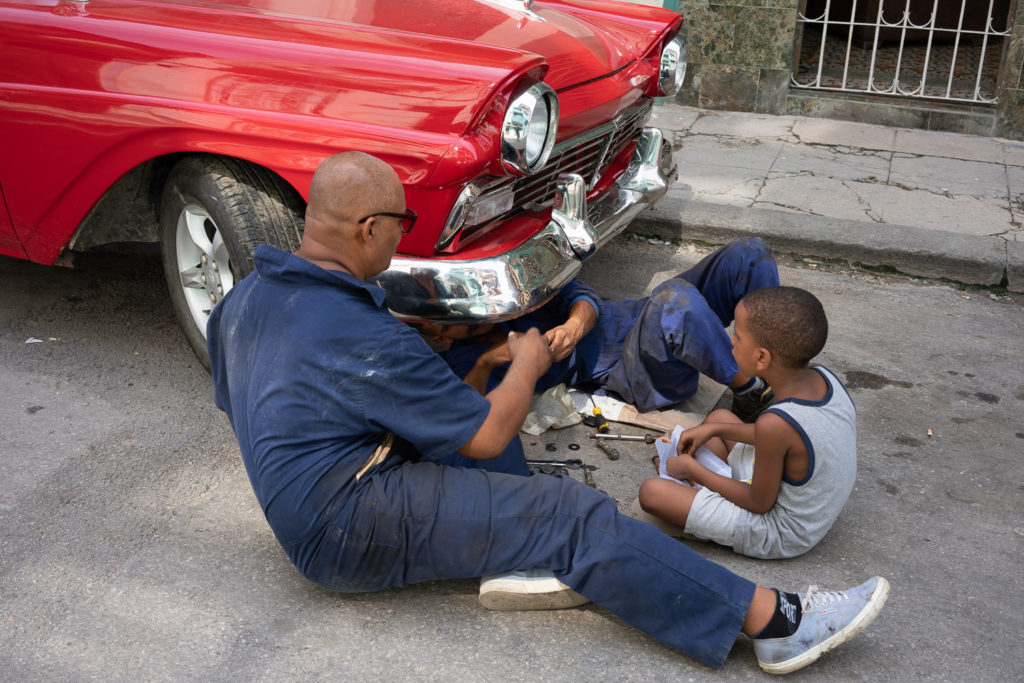Centro Habana – Cars
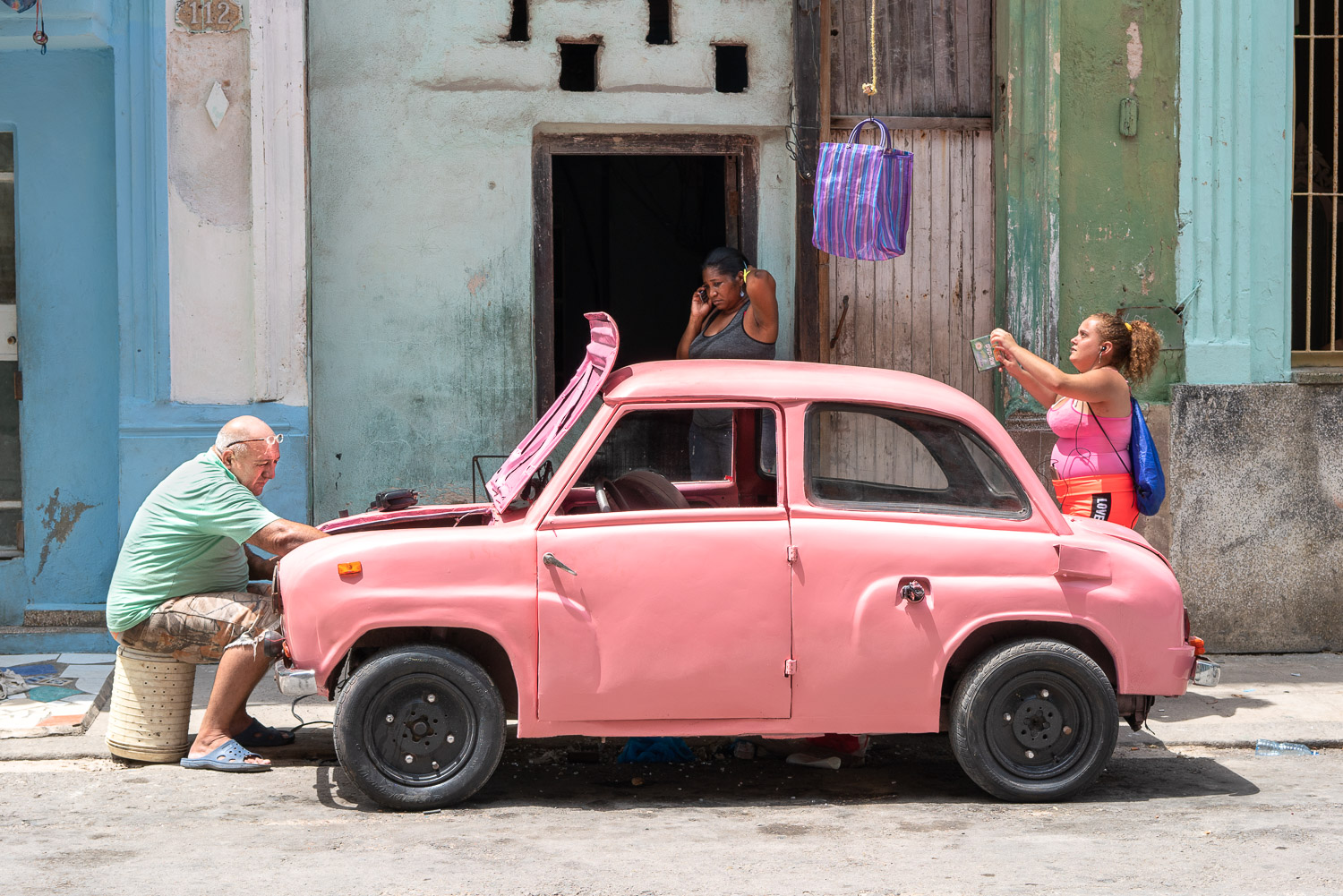
I want to share some photos of old cars in Centro Habana, ones that are unlike the restored-looking classics you see in parts of town, but first let me say a bit about classic cars generally in Cuba. Most of you probably know that Havana has a lot of classic American cars from the 1950’s. This is because imports of American cars were banned after the Revolution in 1959, and constraints were also imposed on the buying and selling of cars – leaving the stock of automobiles in Cuba relatively stagnant for decades except for continued imports from Russia until the early 1990s, primarily Lada cars and ZiL trucks. It’s great to see the old cars – it’s a real time-warp, especially for those of us that grew up in the US and were car-obsessed young kids (every year when the new models, not quite as old as these, were introduced I would convince my father to drive me around to car dealerships so I could inspect every detail and collect stacks of brochures). These 50-60 year-old Havana cars are kept running by clever and determined mechanics. Worn-out components are replaced with used parts that are adapted to fit, because imports of new parts were also banned. Diesel engines are sometimes installed, replacing the V8s and straight-6s from the 1950’s, and running on much cheaper (and dirtier) diesel fuel.
Many of the classic American cars are being operated as taxis in Old Havana, the tourist-heavy part of town, where folks will pay a premium for a tour in one. These taxis are usually painted in eye-catching colors and appear to be in great condition. But a classic car’s bodywork is sometimes mostly what’s left of the original vehicle! Climb inside and they are not the complete restorations they appear to be on the outside. Worn-out replacement seats and dashboards with odd instrumentation seem to be typical, and the doors don’t latch so securely anymore – some seem like they might pop open at any time (and don’t expect seat belts).
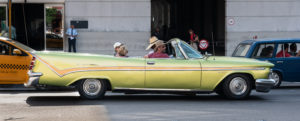
Adjacent to Old Havana, in the Centro Habana neighborhood that I’ve been posting about the last few weeks, the classic cars are quite different. Here the cars look their age – body paints are dull, the Bondo holding the bodywork together is more obvious, and body trim is often missing or has been replaced with odd substitutes. These cars were more interesting to me, and flat paint gave some a kind of ghostly quality. In Centro mechanics work on their cars in the streets, with friends and family looking on. There’s hardly any traffic in the neighborhood, so a street mechanic can lie on his back in the street and slide under the car without any fear that he’s going to get run over. I loved walking around and nosing into other peoples’ car projects. Several photos below show how much the street is the garage, with wheel-less front ends propped up, and a small dark shed piled high with used parts of all kinds. You can see just how much of a work-in-progress some of these vehicles are. There was a large blue truck parked just outside my casa particular with a gaping cavity where its engine should have been. Another vehicle had been completely gutted inside, stripped down to the sheet metal – no seats, interior panels, dashboard – nothing but an instrument cluster held in place with a piece of rope. The owner was at work in the engine compartment, but once that was under control there was still going to be a lot to do. In the intro image above I caught a big guy leaning into the front compartment of a tiny pink car, with its hood open all the way back against windshield. It’s a comical car, maybe an old Fiat, that would make a perfect circus clown car. It looked like it had been shrunk, and had been modified with air scoops on the rear fenders. A woman with her hands outstretched to a shopping bag hanging from a line from an upstairs balcony underscores that this is Centro!
